#aborigines
Text
The tropical arid lands of Australia have been the continual home to Indigenous people possibly longer than anywhere on Earth today. Far from being one of the Earth’s remaining wilderness areas, the Western Deserts of Australia are the ancestral home of a number of Aboriginal peoples, who have managed these landscapes for millennia. Indeed, the effects of removing Indigenous peoples from the landscape in the 1960s was catastrophic, resulting in uncontrolled wildfires and a degradation of the ecological qualities for which this landscape was originally valued. Unsurprisingly, the return of these lands to Indigenous traditional owners over the past two decades has seen improvements in the socioecological dynamics of the region. Indeed, some Aboriginal peoples in Australia view “wild country” (wilderness) as “sick country’”: land that has been degraded through a lack of care through use. Thus, Aboriginal notions of wilderness are antithetical to the technocratic and romantic notions of wilderness representing “pristine” and healthy ecosystems that underpin many modern-day conservation efforts. The outcome continues to be a clash of worldviews in a globalizing society where the Western epistemologies governing dominant conservation practices operate in an echo-chamber that continues to erase other ways of knowing from conservation dialogue.
Indigenous knowledge and the shackles of wilderness
1K notes
·
View notes
Text
The Yara-ma-yha-who is a legendary creature found in Australian Aboriginal mythology. The legend is recounted by David Unaipon. According to legend, the creature resembles a little red frog-like man with a very big head, a large mouth with no teeth and suckers on the ends of its hands and feet.

Pic by tohdraws on deviantart
The Yara-ma-yha-who is said to live in fig trees. Instead of hunting for food, it is described as waiting for an unsuspecting traveller to rest under the tree. The creature then drops down and uses its suckers to drain the victim's blood. After that it swallows the person, drinks some water, and then takes a nap. When the Yara-ma-yha-who awakens, it regurgitates the victim, leaving them shorter than before. The victim's skin also has a reddish tint to it that it didn't have before. If this process is repeated, the victim becomes a Yara-ma-yha-who themselves.
According to legend, the Yara-ma-yha-who is only active during the day and only targets living prey. "Playing dead" until sunset (it is said to only hunt during the day) is offered as a ploy to avoid attack. Stories of this creature were reportedly told to misbehaving children.
24 notes
·
View notes
Quote
Australia's Indigenous people have over 60,000 years of history, and half of Australians were either born overseas or have a parent who was. But the media representing such a multicultural population remains disproportionately white. A 2022 study found more than three quarters of the reporters or presenters on Australian TV were from an Anglo-Celtic cultural background. The difference was even more pronounced at the leadership and board level.
Tiffanie Turnbull, ‘Stan Grant: Aboriginal TV host's exit renews criticism of Australian media’, BBC
62 notes
·
View notes
Text

181 notes
·
View notes
Text
Australia rejects proposal to recognise Aboriginal people in constitution
17 notes
·
View notes
Text
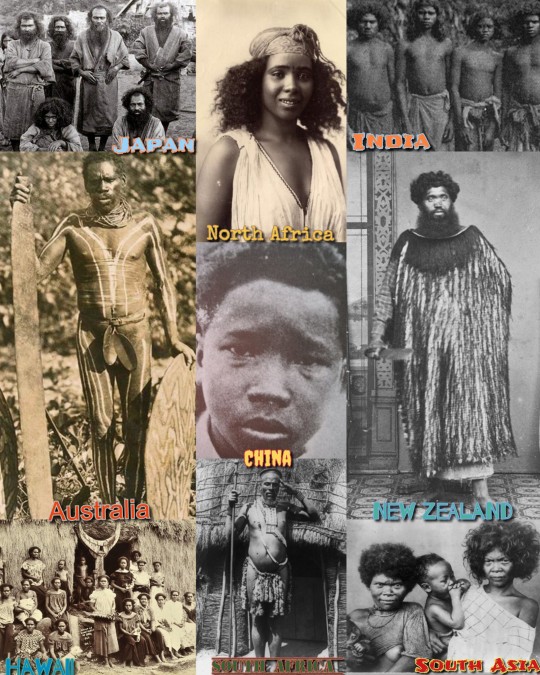
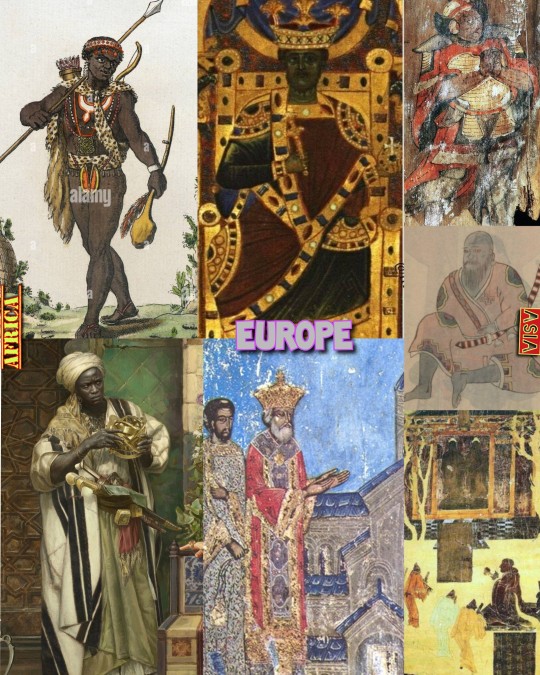
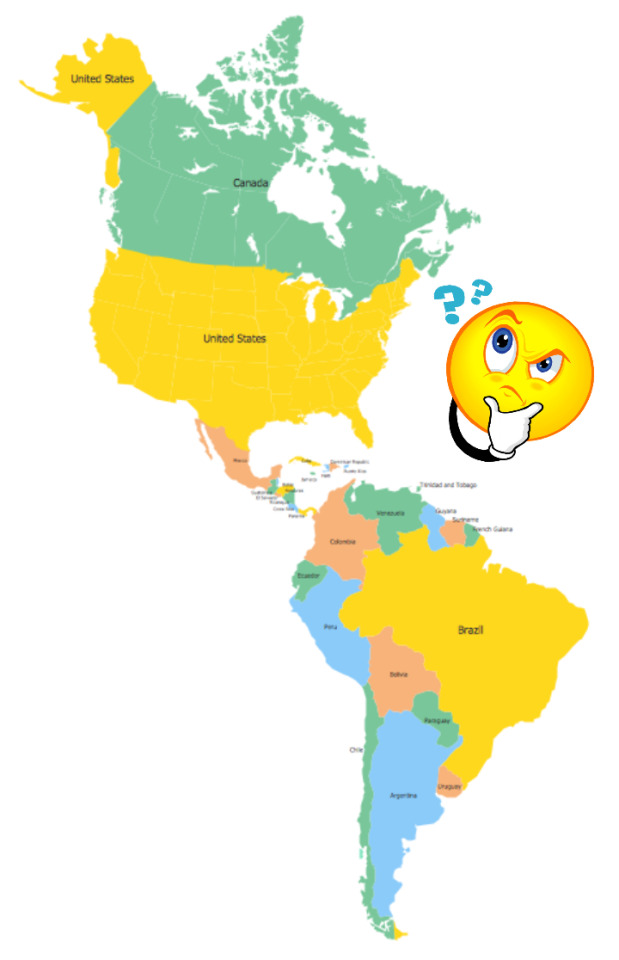
Just my reminder that apparently no dark skinned population was found in the Americas at all😅. Apparently they existed everywhere else but here.Poor Us 😭

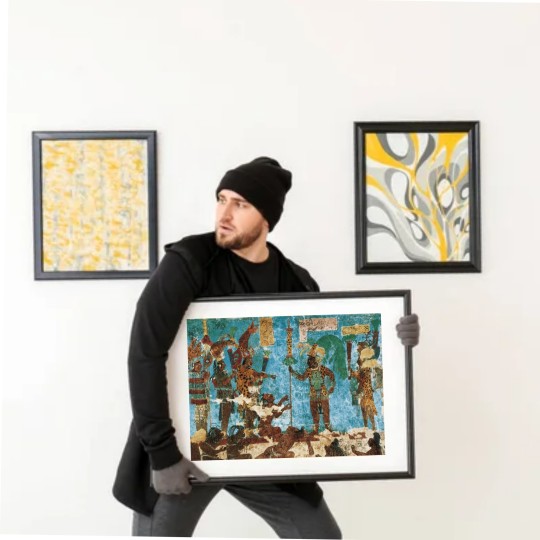
Y'all better stop lying and keep them folks from stealing ur Heritage & History 👌🏿
#black history#autochthonous#aboriginal#black history month#aboriginal american#african history#american aborigine#black history 365#muurs#aborigines#black asians#afro European#negrito#black European#muur#world history#black culture#black history facts
16 notes
·
View notes
Text




How they look? 💚
13 notes
·
View notes
Text


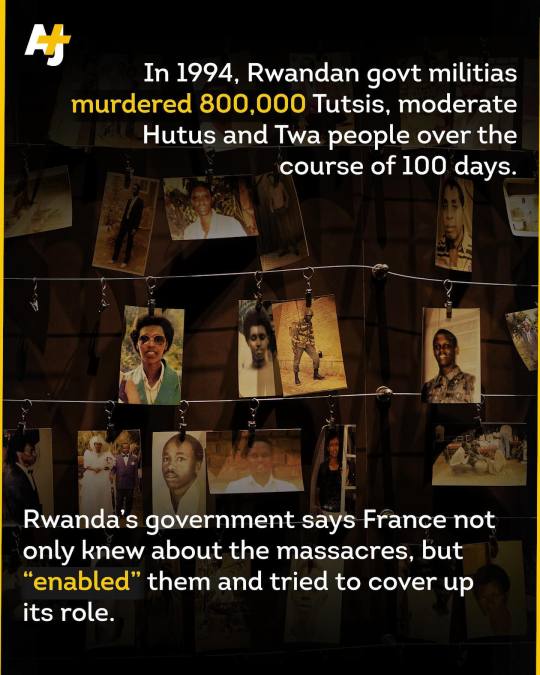




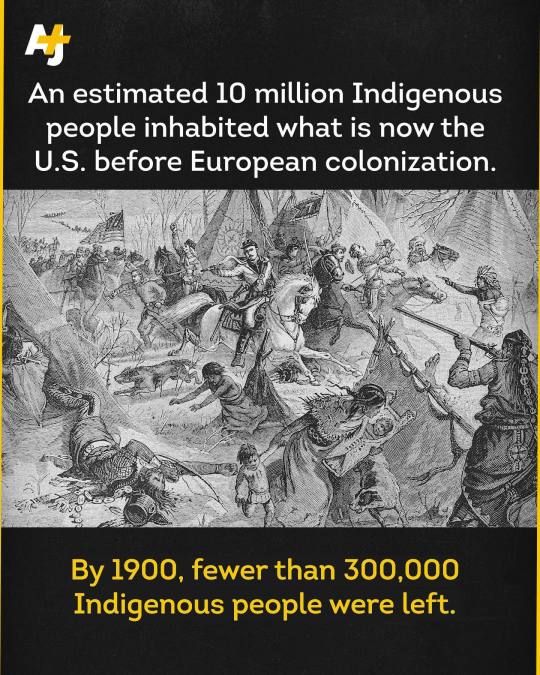
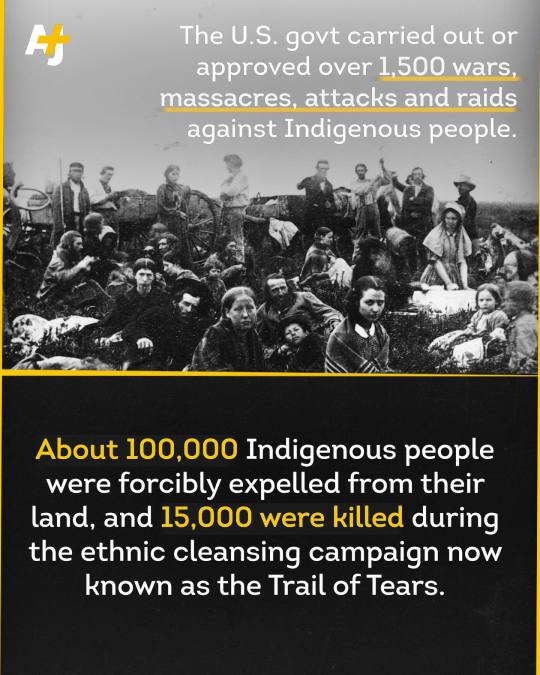
#icc#icj#rwanda#Namibia#aborigines#indigenous rights#the US is complicit in genocide#france is complicit in genocide#Germany is complicit in genocides#theyve learned nothing#what happened to “never again”?#no accountability#double standards#accountability isnt antisemitism#the us is complicit in genocide#israel is committing genocide#israel is an apartheid state#apartheid#ethnic cleansing#darfur#spread awareness#we will never forget#colonization#trail of tears#the US has the blood of millions of innocents on its hands#founded on genocide#stand up for humanity#hold them accountable#justice delayed is justice denied#selective justice
8 notes
·
View notes
Text

A group of "half-caste" children in Australia, stolen from their families to be raised separate from society.
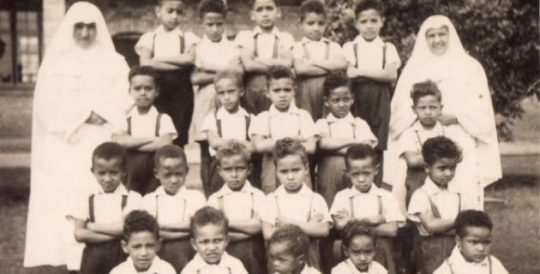
A group of metís boys from the Congo, stolen from their families to be raised separate from society.

Native American children stolen from their families in Oklahoma to "civilize" them.
In every picture, the penguins are there.
#australia#congo#aborigines#metis#but not native american metis#native americans#indian boarding schools#stolen children#america#christianity is a tool of colonialism#when in the hands of white supremacists
9 notes
·
View notes
Text
youtube
Big Horn Mountains (1873) Ambient Music
#big horn mountains#big horn#native american#indigenous#nativeamericans#native#first nations#native american art#american indian#native art#natives#navajo#native american culture#native beauty#native american history#indigenous art#aboriginal artist#aboriginal culture#aborigines#dances with wolves#westworld#western#westerns#cowboy#old west#wild west#the good the bad and the ugly#spaghetti western#western spaghetti#rocky mountains
3 notes
·
View notes
Text
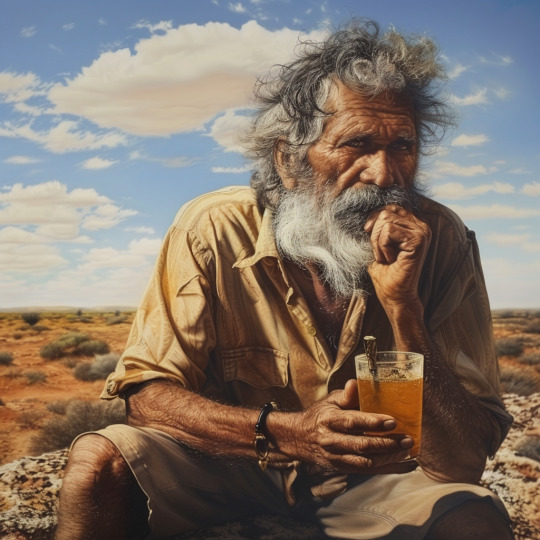
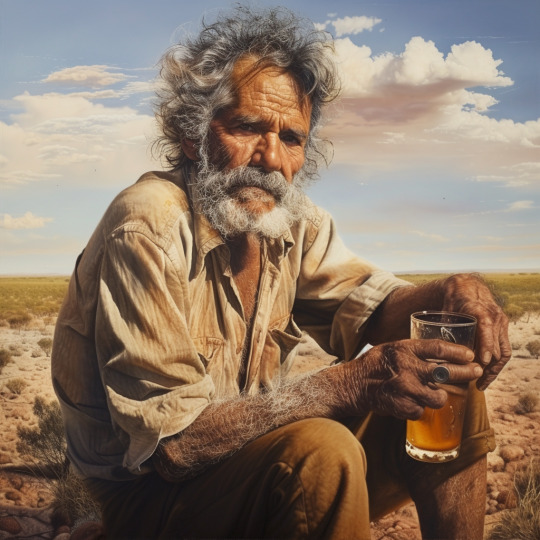



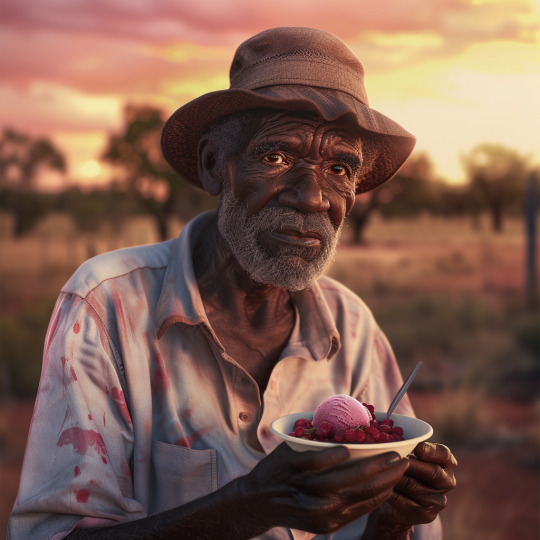




4 notes
·
View notes
Text
CANARIAS NO SE VENDE, SE AMA Y SE DEFIENDE.


El periódico digital español www.publico.es se hace con la publicación de la manifestación convocada en Santa Cruz de Tenerife y en Las Palmas de Gran Canaria contra la super urbanización turística Cuna del Alma en Tenerife y el macro proyecto de Red Eléctrica Chira-Soria del barranco de Arguineguin en Gran Canaria, muy pocos medios de comunicación publicaron estás masivas manifestaciones en defensa de las zonas arqueológicas Canarias que van a ser destruidas por los colonizadores españoles, la publicación es en sí, un enredo leerla porque se hace eco de las dos manifestaciones y quien no tenga conocimientos del tema se puede confundir fácilmente, vamos a leerla.
Preservación de la naturaleza: "Canarias no se vende, se ama y se defiende"
Protestas en Gran Canaria y Tenerife contra el proyecto de Chira Soria y la destrucción del medioambiente.
Manifestación celebrada este sábado en Tenerife para 'Salvar Canarias'.
Santa Cruz de Tenerife 22/10/2022 17:48
Andrea Domínguez Torres
"Canarias no se vende, se ama y se defiende" es una de las consignas más repetidas en las movilizaciones ecologistas que se han sucedido estos meses en el archipiélago. El lema tampoco faltó este sábado en las manifestaciones que se convocaron de manera paralela en Gran Canaria y Tenerife para Salvar Canarias. Los macroproyectos urbanísticos, la sobreconstrucción de los espacios naturales y la dependencia de Canarias del sector turístico fueron las críticas principales, pero no las únicas.
Dos mil personas, según los datos de la Delegación del Gobierno en las islas, han protestado este 22 de octubre en Tenerife contra la destrucción de la naturaleza. Esta manifestación surgió como apoyo a la convocada en Gran Canaria por más de un centenar de asociaciones y que reunió a 12.000 personas, según los convocantes. El punto en común de estas concentraciones ha sido la protesta contra el proyecto de Chira-Soria.
La multinacional Red Eléctrica Española S.A. planea construir una central eléctrica de bombeo con agua desalada "en el corazón de Gran Canaria". El proyecto se localiza en el barranco de Arguineguín, el de mayor envergadura de la isla y ha enfrentado a colectivos ecologistas con dirigentes políticos de la isla.
El modelo piloto del proyecto turístico de Cuna del Alma
Asociaciones ecologistas envían a la Fiscalía el proyecto turístico de Cuna del Alma en Tenerife
En ambas protestas se ha señalado el papel de las multinacionales en el archipiélago. "Los políticos no ofrecen un modelo alternativo. Estamos al servicio de multinacionales del turismo, de la alimentación y de la energía, así que hay muchas cosas que arreglar", gritaban en Tenerife. "Basta de políticos serviles a las multinacionales, basta de destruir esta tierra", añadió el arqueólogo Julio Cuenca desde la isla vecina.
A las críticas contra el proyecto de Chira-Soria se han sumado otras reivindicaciones centradas en la provincia de Santa Cruz de Tenerife. Entre ellas, los vertidos de aguas residuales al mar, la construcción de villas de lujo en el enclave del Puertito de Adeje o la postulación de La Gomera y El Hierro para convertirse en lanzaderas de naves espaciales. "No es solo el Puertito, es toda Canarias", alegaban los activistas durante el recorrido.
A diferencia de la movilización de Gran Canaria, en el anuncio de la movilización de Tenerife no aparecen asociaciones convocantes como suele ser habitual. Tampoco hay rastro de los colectivos que llamaron a la anterior, celebrada en junio y que reunió a 10.000 personas en las mismas calles. Durante la lectura del manifiesto, los convocantes resolvieron algunas de estas cuestiones: "Somos don y doña nadie, gente del pueblo, personas que hemos sentido la llamada de la responsabilidad y el compromiso".
Minutos antes, la cabecera de la manifestación estaba protagonizada por mujeres que portaban la frase: "¿Qué legado queremos dejar?". El mensaje estaba dirigido a la población canaria, pero también a las esferas políticas del archipiélago. "Nos vemos obligados a salir a la calle en reiteradas ocasiones porque el Gobierno de Canarias no quiere escuchar lo que queremos para los bienes que son de todos", insiste una de estas convocantes anónimas.
Esta protesta reunía tintes políticos que iban más allá de la reivindicación ecologista. Coincidiendo además con que este sábado 22 de octubre se celebra el 58 aniversario de la bandera nacional canaria, por lo que muchos manifestantes portaban la bandera tricolor de las islas, símbolo de los movimientos independentistas.
Las alusiones al independentismo no quedaron ahí, desde algunos gritos a la bandera española ("no nos representa") hasta pancartas en las que se denominaba a Canarias país o nación. Tampoco faltaron los símbolos aborígenes, como por ejemplo las referencias al abecedario guanche y los bucios, una caracola que se empleaba para comunicarse en largas distancias.
El acto concluyó con los manifestantes bailando batucadas y escuchando canciones protesta. Luego se leyó el breve manifiesto. "En apoyo a nuestros hermanos y hermanas de Gran Canaria. Para mostrar ese rechazo y pelear por ese barranco espectacular que es Chira-Soria. Estamos fortaleciendo la unión y el apoyo de nuestras islas. Canarias dice basta, ni un centímetro más de destrucción", concluyó.



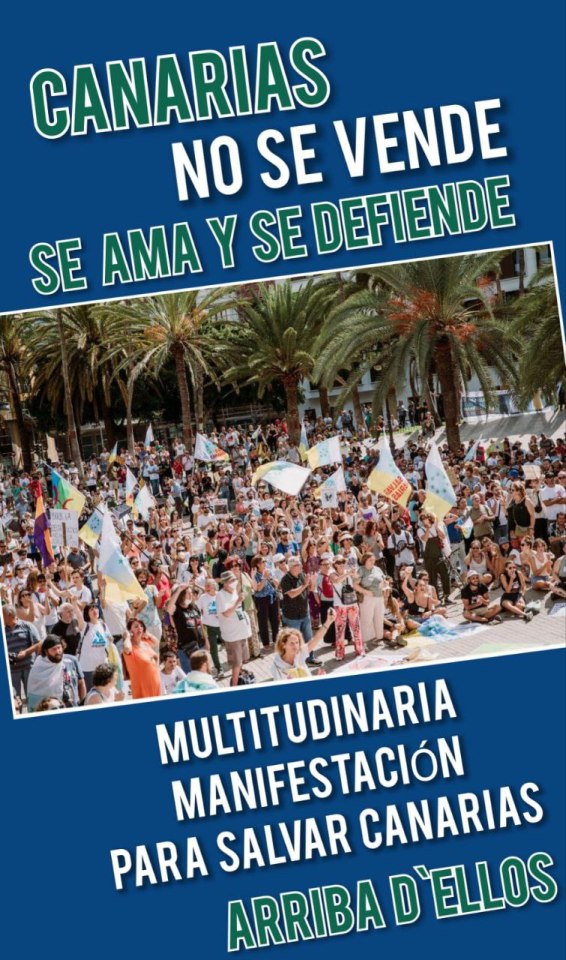

#alzados#cuna del alma#stop cuna del alma#chira-soria#barranco de arguineguin#salvemos canarias#canarias no se vende se ama y se respeta#aborigenous#indigenous#culture#history#genocide#native#unesco#united nations#international criminal court#court penal international#canarias la colonia mas antigua del mundo#canarias tiene identidad cultural propia#aborigines#indigenas#cultura#historia#genocidio#arqueology#arqueologia#corte penal internacional#descolonizacion de canarias#canarias#naciones unidas
48 notes
·
View notes
Text
The Northern Territory (NT) Labor government this week introduced a draconian youth curfew in Alice Springs, banishing anyone under the age of 18 from the town centre after dark for at least the next two weeks.
The announcement was ostensibly prompted by an attack on an Alice Springs pub on Tuesday, although it occurred in broad daylight and involved people as old as 50. The NT government described this as the “final straw.”
This single incident, involving a few dozen people, is being used by the Labor government as a pretext to implement racially targeted martial-law policies, in line with the demands of the Murdoch press and the far right.
#workers struggles#wsws#socialist equality party#iysse#class war#capitalism#fascisim#racism#australia#australian politics#alice springs#aborigines#aboriginal people#political corruption#anthony albanese#workers of the world unite#end capitalism#socialist revolution#socialism#leon trotsky#trotskyism#karl marx#marxism#the communist manifesto#vladimir lenin#fourth international
2 notes
·
View notes
Text

To white Australians, Menindee is famous as the base camp for two whites who had suffered worse from the desert's dry heat over a century earlier: the Irish policeman Robert Burke and the English astronomer William Wills, ill-fated leaders of the first European expedition to cross Australia from south to north. Setting out with six camels packing food enough for three months, Burke and Wills ran out of provisions while in the desert north of Menindee. Three successive times, they encountered and were rescued by well-fed Aborigines whose home was that desert, and who plied the explorers with fish, fern cakes, and roasted fat rats. But then Burke foolishly shot his pistol at one of the Aborigines, whereupon the whole group fled. Despite their big advantage over the Aborigines in possessing guns with which to hunt, Burke and Wills starved, collapsed, and died within a month after the Aborigines' departure.
3 notes
·
View notes
Text
Aboriginal elder and advocates fear lack of information about the Voice to Parliament
youtube
A Noongar Elder is urging Australians to learn more about the proposed Indigenous Voice to Parliament, as he fears a lack of understanding may sink the looming referendum.
The growing concern is shared by others, on both sides of the Voice debate, including advocates, and Former Australian of the year, Fiona Stanley.
#australia#voice to parliament#the voice#ausgov#auspol#tasgov#taspol#politas#indigenous#indigenous rights#humanrights#classwar#antifascist#antiracism#antinationalism#aborigines#aboriginal#blacklivesmatter#black lives matter#antiauthoritarian#antinationalist#antifascism#antifascista#anticapitalista#anti capitalist love notes#anti capitalist excellence#anti capitalism#goodnightwhitepride#imperialism#anti imperialism
9 notes
·
View notes
Text
A real history of Aboriginal Australians, the first agriculturalists | ...
youtube
How Black Indigenous History are denied and the shit people who calls themselves white rewrote history of making themselves superior. The conqueror will never tell the truth about true history of Black Indigenous People worldwide.
#black love#black positivity#black africans#black history#black aboriginal#aborigines#aboriginals#black indigenous love#black indigenous history#black indigenous women#black indigenous people#Youtube
4 notes
·
View notes